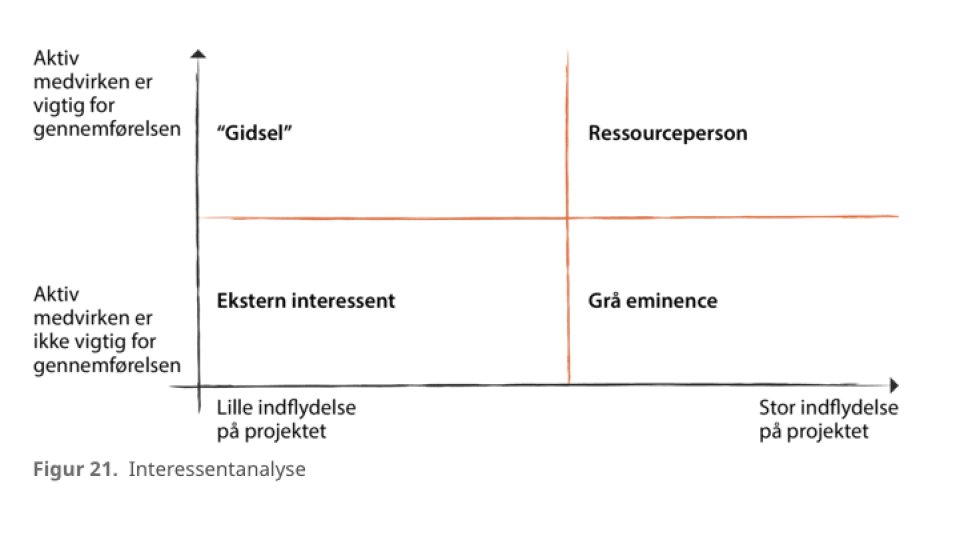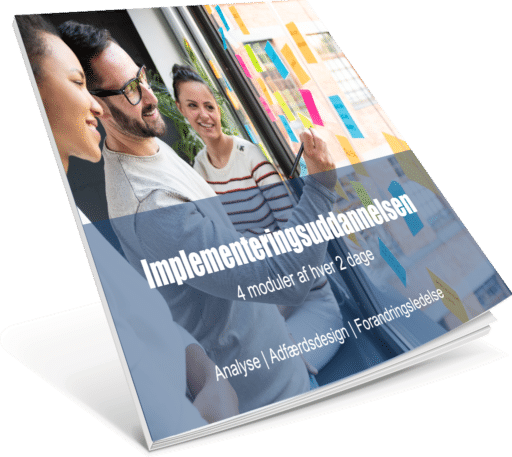Implementing change, new projects and initiatives in an organization can be a complex process involving a wide range of stakeholders with different needs and expectations. To ensure a successful implementation, it is therefore important to have a clear understanding of which stakeholders are affected by the project and how best to meet their demands and needs. This is where a stakeholder analysis comes in.
A stakeholder analysis is an essential part of any implementation as it provides insight into which individuals or groups will be affected by the implementation. A stakeholder analysis can contribute positively to an implementation by ensuring that the needs and expectations of stakeholders are taken into account and that their influence and power is properly assessed. In this article, we will introduce what a stakeholder analysis is, its purpose and a stakeholder analysis template as an example of how to perform a stakeholder analysis step-by-step.
What is a stakeholder analysis?
A stakeholder analysis is a systematic process of identifying, analyzing and assessing stakeholders and their relationship to the given change, project or initiative to be implemented. The purpose of the analysis is to identify, understand and prioritize stakeholder needs and expectations so that they can be integrated into the implementation. A stakeholder analysis is therefore an essential part of an implementation plan and is crucial to ensure a successful implementation process.
Read our article on cultural analysis, which is also an important part of implementing change.
Stakeholder analysis contributes to a successful implementation
A stakeholder analysis can positively contribute to an implementation in several ways. First of all, it helps identify which stakeholders will be affected by the implementation and how they will be affected. This makes it possible to integrate stakeholder needs and expectations into the implementation and minimize resistance to the implementation. The analysis also helps to identify the influence and power of stakeholders so that their support can be gained and their resistance can be countered. Finally, the analysis helps prioritize stakeholder needs and expectations so that resources can be used most effectively.
Want to get even better equipped to work with stakeholder analysis?
LEAD's implementation training gives you the methods to design, facilitate and lead strategic implementation processes and changes to create the impact you need.
This is an education for those who work with development, processes and change management.
Learn more about our research-based implementation training
When in the implementation process do you do a stakeholder analysis?
A stakeholder analysis should be conducted early in the implementation process to ensure that the needs and expectations of stakeholders are considered throughout the process. It is important to keep in mind that stakeholder needs and expectations may change during the implementation process, and it is therefore necessary to update the analysis on an ongoing basis.
Template: How to create a stakeholder analysis
If you're looking for input on how to create a stakeholder analysis for your implementation, we've created a step-by-step guide below.
Step 1: Stakeholder identification
The first step in a stakeholder analysis is to identify the people or groups that will be affected by the implementation. This can include employees, managers, customers, suppliers, investors and other stakeholders. It is important to include all relevant stakeholders in the analysis to ensure a complete understanding of the impact of the implementation.
When identifying stakeholders, it can be helpful to group them into 4 different types according to their role in the implementation process. This is done to create a better overview of how much influence the stakeholder has on the execution of the implementation and how important their involvement is to the success of the implementation.
Categorize your stakeholders into these 4 types:

External stakeholder: This group of stakeholders is not directly involved in the project and has minimal interest in it. They don't require much attention or resources from the project team and can be satisfied with being informed about the project.
"Hostage": This group of stakeholders will be affected by the end result of the project. Therefore, it is important to keep them informed and involve them in the process to minimize resistance and increase support for the project.
Grey eminence: While this group of stakeholders may not show interest in the project, they can still influence it. It's important to listen to them and take them seriously to avoid potential problems in the process.
Resource person: This group of stakeholders is the most important of the four types. They can influence the project, and the project can influence them. It is therefore important to involve them in the process and secure their support and cooperation to ensure a successful implementation.
By identifying and understanding the different types of stakeholders in an implementation process, the project team can better adapt their communication and strategy to meet their needs and expectations and ensure a successful implementation.
Step 2: Analyze stakeholder needs and expectations
The next step is to analyze the needs and expectations of the stakeholders. This can include their wishes and requirements for the implementation, as well as their expectations of the outcome of the implementation. It is important to listen to stakeholders' views and needs to understand how the implementation may affect them positively or negatively.
Step 3: Assessing stakeholder influence and power
The third step is to assess the influence and power of stakeholders. This can include their ability to influence the implementation, as well as their ability to resist or support the implementation. It is important to identify the most powerful and influential stakeholders in order to effectively manage their needs and expectations.
Step 4: Prioritizing stakeholders
The final step is to prioritize the stakeholders. This may include assessing which stakeholders are most important to involve in the implementation process and which may be less important. Prioritizing stakeholders is important in order to effectively manage their needs and expectations.
How to put stakeholder analysis into practice
A stakeholder analysis can be used to improve implementation in several ways. First and foremost, it can be used to identify and understand stakeholder needs and expectations so that they can be integrated into the implementation. This can help minimize resistance to the implementation and ensure that the implementation meets the requirements of the relevant stakeholders. You can read more about employee resistance to change in the article Resistance to change in organizations.
The analysis can also be used to identify potential issues and risks that may arise during implementation. Finally, the analysis can be used to develop a communication plan that ensures stakeholders are informed and involved in the implementation process.

Do you want to be better at:
- Plan and execute projects that don't get derailed or scrapped halfway through
- Create greater positive measurable impact from your implementations
- Create motivation, engagement and followership among your stakeholders
- Translate strategies and decisions into behavioral goals
- Work continuously with concrete behavioral changes
- Dealing with resistance from those involved
- Use learning and benefit realization as an integral part of your implementations
Then fill out the form below and receive our description of the research-based implementation training that gives you the most powerful tools for implementation in practice.




